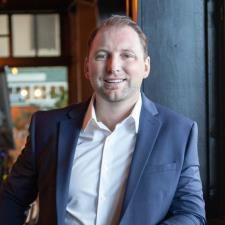
Nathaniel B. answered • 10/26/19
Bachelor of Science in Biology with 2.5+ years of tutoring experience
Without knowing your background, it may be difficult to answer your question concisely. I'll do my best, but please let me know if you need me to elaborate on anything!
During cellular respiration, electrons are passed from protein complex to protein complex in the electron transport chain. This is done to allow for the gradual release of the electrons' energy, which is utilized to pump protons across the inner mitochondrial membrane. The proton gradient this creates allows for a protein embedded in the inner mitochondrial membrane to produce ATP as protons flow back through it. You probably already know this, but the important takeaway is that there is an order to how these electrons move. They move from complex I to complex III to complex IV (or complex II to III to IV, we won't go into it). Electrons are only passed along when it is energetically favorable to do so. It is not favorable to carry too many electrons, and so they are passed "down" the chain before more are accepted. Oxygen comes into play once electrons have reached the very end of the electron transport chain. Essentially, it is the electron's last stop in their role in cellular respiration. At this stage they are very low energy, are done being passed down the chain, and are settling down with Oxygen.
It is also important to think about the source of these high-energy electrons. The citric acid cycle is where most of these are "collected" using electron carriers such as NADH and FADH2.
So imagine this scenario where Oxygen is no longer able to act as the final electron receptor due to the presence of Cyanide. What happens? Complex IV cannot hand off its electrons to Oxygen, so complex III cannot pass its electrons to complex IV, so complex I or II cannot pass its electrons to complex III, and so on. This continues all the way back to the citric acid cycle. If NADH and FADH2 cannot offload their electrons to Complex I or II, they cannot "return" to the citric acid cycle to pick up more. They become bogged down with electrons and are therefore unable to retrieve more. This causes the electron transport chain (and the citric acid cycle) to basically stop. When this occurs, protons are no longer getting pumped across the membrane. The protons continue to flow back, more and more slowly, until an equilibrium is reached. Without a proton gradient, ATPase cannot create ATP. Without ATP from cellular respiration, we die. Even glycolysis requires some NAD+... We experience suffocation even in an abundance of oxygen because it cannot do the only job we need it to.
A metaphor that might be useful when visualizing this problem is that of a bucket brigade. Electrons move to states of lower energy by moving from complex to complex much in the same way a bucket moves down a line of volunteers. They don't pass the buckets backward and they certainly can't throw one over the next person in line. In this scenario, the person filling the buckets is the Citric Acid Cycle, the first person in line may be NADH or FADH2, and the remaining volunteers are complexes in the electron transport chain. You can think of oxygen binding to the electrons as the bucket finally being tossed on the fire.
In this example, Cyanide is the equivalent of the last person in the bucket brigade being kept from throwing their bucket of water on the fire. The last person in line turns back to see that the next bucket of water is ready, but their hands are already full with a bucket. They can't take the next bucket. Soon, the person behind them in line has their hands full and are unable to take a bucket. Eventually the first person in line can't even fill a bucket because their hands hold a full bucket and there is nobody to hand a bucket to. Everyone is holding buckets, but nobody is moving them. So the fire burns.




